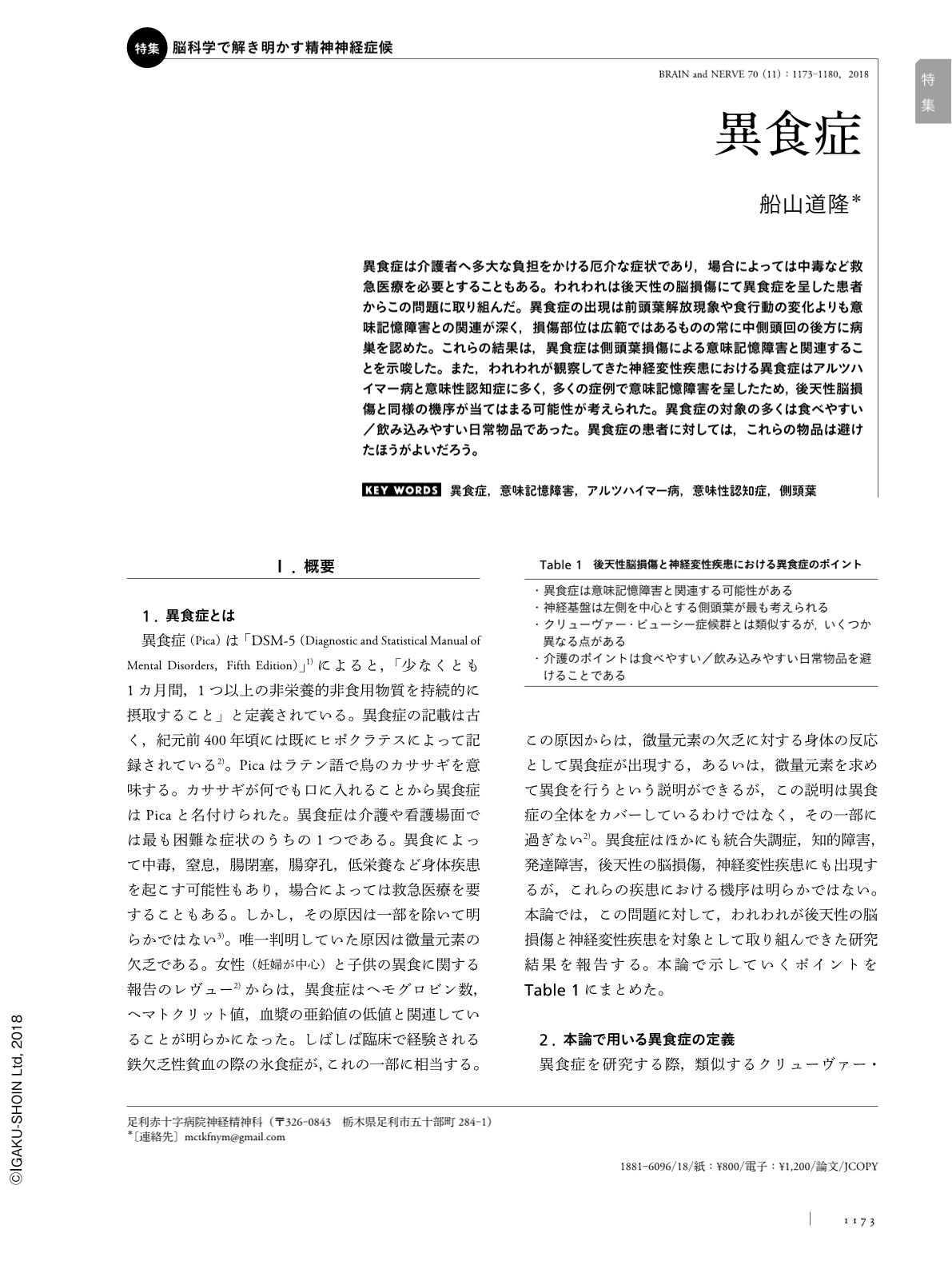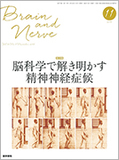Japanese
English
- 有料閲覧
- Abstract 文献概要
- 1ページ目 Look Inside
- 参考文献 Reference
異食症は介護者へ多大な負担をかける厄介な症状であり,場合によっては中毒など救急医療を必要とすることもある。われわれは後天性の脳損傷にて異食症を呈した患者からこの問題に取り組んだ。異食症の出現は前頭葉解放現象や食行動の変化よりも意味記憶障害との関連が深く,損傷部位は広範ではあるものの常に中側頭回の後方に病巣を認めた。これらの結果は,異食症は側頭葉損傷による意味記憶障害と関連することを示唆した。また,われわれが観察してきた神経変性疾患における異食症はアルツハイマー病と意味性認知症に多く,多くの症例で意味記憶障害を呈したため,後天性脳損傷と同様の機序が当てはまる可能性が考えられた。異食症の対象の多くは食べやすい/飲み込みやすい日常物品であった。異食症の患者に対しては,これらの物品は避けたほうがよいだろう。
Abstract
Pica is an extremely troublesome behaviors and causes a particularly high burdens for family caregivers. It can lead to dangerous medical consequences, such as malnutrition and intoxication, which sometimes require emergency medical treatment. Its neural basis and underlying mechanisms, however, have not been clarified. We addressed these issues by investigating patients with acquired brain injury who presented with pica. We found that semantic memory deficits were most often associated with pica rather than frontal release signs or changes in eating behaviors. Individuals with pica displayed lesion in the posterior part of the middle temporal gyrus, although spread across a wide area. Taken together, our findings suggest that semantic memory deficits, because of temporal lobe damage might be associated with pica. Moreover, Alzheimer's disease and semantic dementia are the two main degenerative disease etiologies that cause pica. Our findings may also be applied to degenerative disorders as temporal lobe involvement and semantic memory deficits are common. The most common items ingested in pica are daily necessities that are easy to swallow or drink; as such, these items should be avoided in patients with pica.

Copyright © 2018, Igaku-Shoin Ltd. All rights reserved.


